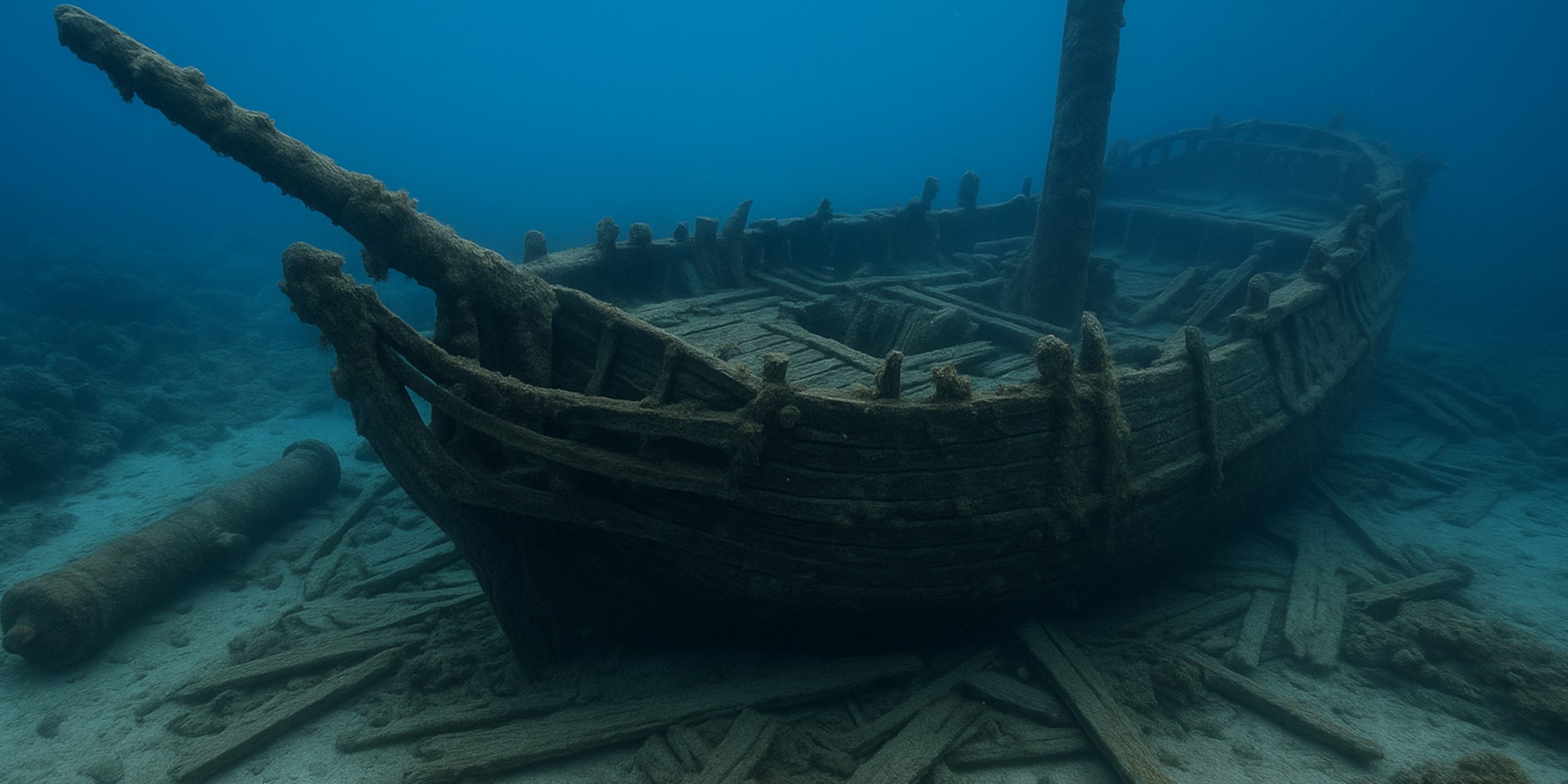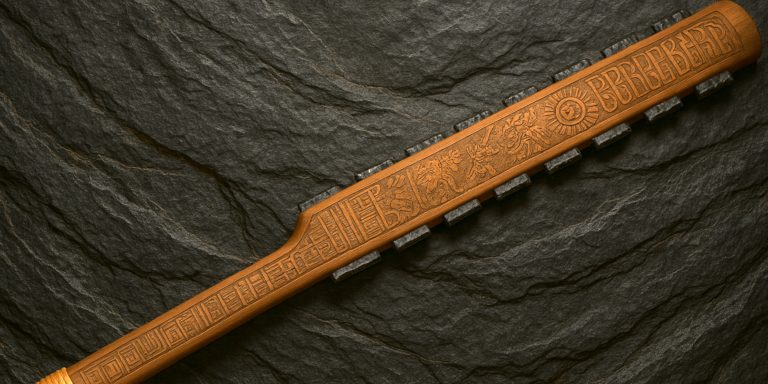
What Sunken Ships Tell Us About the Real Golden Age Pirates
Beneath the waters off the Americas, West Africa, and the Indian Ocean lie the remains of the pirate ships that once terrorised trade routes. Far from myth or fiction, these wrecks have yielded some of the most revealing archaeological discoveries in maritime history. Each recovered object offers a piece of evidence about how pirates actually lived, fought, traded, and died. From weapons and tools to stolen cargo and rare coins, the underwater remains of pirate vessels strip away legend and give us something far more concrete.
Notable Pirate Wrecks and Their Finds
Queen Anne’s Revenge (1718)

Captain: Edward Teach, better known as Blackbeard
Location: Off the coast of North Carolina, USA
Discovered: 1996
The wreck of Queen Anne’s Revenge is among the most thoroughly excavated pirate ships ever found. Hundreds of artefacts have been recovered, including:
- Naval cannons of various calibres, some loaded
- Surgeon’s tools, including a urethral syringe and pewter instruments
- Navigational instruments like dividers and sounding weights
- Gold dust traces in weighing equipment, hinting at African trade links
- A lead sounding weight with embedded cloth, used for ocean floor sampling
This ship was originally a French slaver before Blackbeard seized it in 1717. The mix of European and African artefacts reflects that transitional history.
Whydah Gally (1717)
Captain: Samuel “Black Sam” Bellamy
Location: Cape Cod, Massachusetts
Discovered: 1984
The Whydah is the first authenticated pirate shipwreck found in North American waters. It sank in a storm while loaded with treasure. Key finds include:
- Over 200,000 coins, from Spanish reales to African currency
- Pistols, muskets, and boarding axes
- Shackles and iron bars likely used for slave cargo
- A ship’s bell inscribed with “Whydah Gally 1716”
- Gold Akan jewellery, linking the ship to West African origins
The volume and variety of treasure confirmed the ship’s role as both a slaver and a pirate flagship. It’s also the only known wreck of a pirate ship with recovered treasure matching historical accounts.
Fiery Dragon (Captured 1721)
Captain: Christopher “Billy One-Hand” Condent
Location: Madagascar
Discovered: 2015 (debatable authenticity)
Off the coast of Sainte-Marie Island, Madagascar, a site identified as the Fiery Dragon yielded:
- Dozens of bronze cannon
- Barrels of musket balls and powder
- Ornate personal effects like rings and belt buckles
- A 50kg silver bar marked with a Portuguese mint stamp
Although the identification of this wreck remains under dispute, the finds reflect the intense maritime traffic between East Africa, India, and Europe, and the role pirates played in attacking these routes.
What These Finds Tell Us
Archaeological discoveries from pirate wrecks help correct popular myths. Few pirates buried treasure. Most of it was spent or bartered quickly, often on supplies, alcohol, and bribes. The variety of weapons aboard these ships reflects preparation for close-quarters combat, while the inclusion of surgical tools and musical instruments paints a picture of life at sea that wasn’t entirely chaotic or crude.
The recovery of shackles and African trade goods highlights piracy’s overlap with the slave trade. Some pirates had started as privateers or slavers before mutinying and turning to piracy full-time.
Coins and precious metal ingots from across the globe show the interconnected nature of 18th-century trade, and just how international pirate operations were. Pirates weren’t just English or Spanish but included West Africans, freed slaves, and deserters from every colonial navy.
Conservation and Display
Many artefacts recovered from wrecks are now on display at maritime museums across the world:
- North Carolina Maritime Museum (Beaufort, USA) – Queen Anne’s Revenge artefacts
- Whydah Pirate Museum (West Yarmouth, Massachusetts) – coins, weapons, and recovered rigging
- National Museum of Madagascar (Antananarivo) – selected finds from Indian Ocean wrecks
Conservation of underwater artefacts is slow, often taking years. Iron cannon, for instance, must be desalinated through electrolysis before they can be handled safely. Organic items like rope or clothing, when found, are rare and extremely fragile.
Ongoing Projects and Future Discoveries
Dozens of pirate wrecks remain unexcavated or undiscovered. Cuba, the Bahamas, and West Africa remain promising areas for new finds. Private salvors and academic teams continue to clash over rights and methodology, but the field is evolving.
With better scanning technology, deeper submersibles, and improved conservation methods, future discoveries may shed even more light on the real pirate crews behind the legends.
Seven Swords Takeaway
While pop culture clings to its caricatures, the material remains of pirate wrecks give us a clearer and more complex view of their world. They were ruthless but organised, violent but pragmatic, and most importantly, deeply embedded in the global economy they sought to plunder. The seabed has become their archive, and slowly, we’re learning how to read it.



